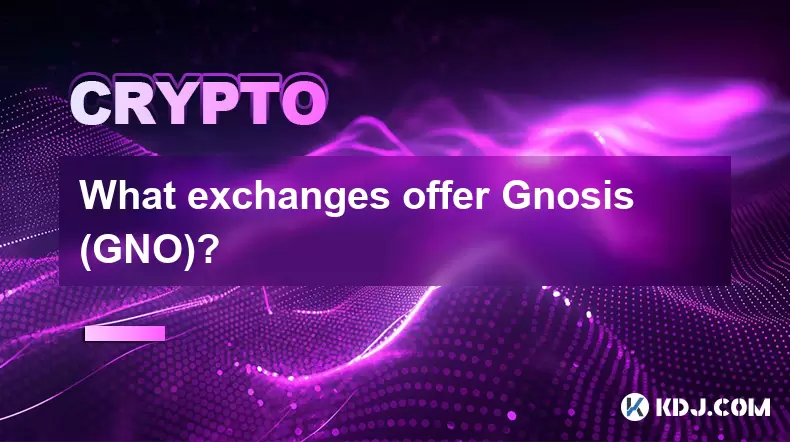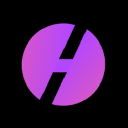-
 Bitcoin
Bitcoin $119700
0.53% -
 Ethereum
Ethereum $4508
5.39% -
 XRP
XRP $3.270
2.86% -
 Tether USDt
Tether USDt $1.000
0.00% -
 BNB
BNB $831.0
2.92% -
 Solana
Solana $189.6
6.89% -
 USDC
USDC $0.9999
-0.01% -
 Dogecoin
Dogecoin $0.2350
2.92% -
 TRON
TRON $0.3500
1.34% -
 Cardano
Cardano $0.8420
6.73% -
 Chainlink
Chainlink $23.26
8.42% -
 Hyperliquid
Hyperliquid $44.42
1.44% -
 Stellar
Stellar $0.4512
3.16% -
 Sui
Sui $3.895
5.15% -
 Bitcoin Cash
Bitcoin Cash $618.7
5.88% -
 Hedera
Hedera $0.2601
4.43% -
 Ethena USDe
Ethena USDe $1.001
0.01% -
 Avalanche
Avalanche $24.45
4.90% -
 Litecoin
Litecoin $128.1
5.41% -
 Toncoin
Toncoin $3.454
1.64% -
 UNUS SED LEO
UNUS SED LEO $9.065
0.44% -
 Shiba Inu
Shiba Inu $0.00001359
3.41% -
 Uniswap
Uniswap $11.42
1.78% -
 Polkadot
Polkadot $4.165
6.36% -
 Cronos
Cronos $0.1664
-0.50% -
 Ethena
Ethena $0.8108
1.79% -
 Dai
Dai $1.000
0.00% -
 Pepe
Pepe $0.00001213
5.22% -
 Bitget Token
Bitget Token $4.438
0.25% -
 Aave
Aave $313.3
5.02%
What is the transaction speed and fee of XLM?
XLM transactions are incredibly fast (seconds to minutes) and cheap (fractions of a cent), though network congestion can slightly increase processing times; fees remain consistently low.
Mar 08, 2025 at 09:50 am

Key Points:
XLM transaction speeds are significantly faster than many other cryptocurrencies, often completing within a few seconds. This speed is a major advantage for users needing quick transactions.
XLM transaction fees are generally very low, often costing only a fraction of a cent. This low cost makes it attractive for frequent or smaller transactions.
Factors influencing transaction speed and fees include network congestion and the specific Stellar network conditions at the time of the transaction.
What is the transaction speed and fee of XLM?
Stellar Lumens (XLM) boasts impressive transaction speeds and remarkably low fees, making it a compelling choice for users prioritizing efficiency and cost-effectiveness. Unlike some cryptocurrencies plagued by slow confirmation times and high transaction costs, XLM stands out for its speed and affordability.
The speed of an XLM transaction typically ranges from a few seconds to a few minutes. This rapid processing is due to Stellar's efficient consensus mechanism and network architecture. Unlike Bitcoin's proof-of-work, Stellar uses a Federated Byzantine Agreement (FBA) which allows for faster transaction validation. However, it's important to remember that this speed can fluctuate slightly based on network congestion. Periods of high network activity may lead to slightly longer processing times.
Transaction fees on the Stellar network are exceptionally low. They are typically a tiny fraction of a cent, often in the range of 0.00001 XLM. This minimal cost makes it incredibly attractive for users performing frequent microtransactions or those with limited budgets. The low fee structure contributes significantly to XLM's overall appeal as a practical and accessible cryptocurrency.
The relatively constant low fee structure is one of the key differentiators for XLM. Unlike some networks where fees surge during periods of high activity, XLM's fee remains consistent. This predictability is crucial for budgeting and planning, particularly for businesses using XLM for payments. This stability is a direct result of the Stellar network's design and its inherent ability to handle large transaction volumes efficiently.
Several factors can influence the exact transaction speed and fee. While the base fee remains low, variations can occur due to network conditions. Increased network congestion during peak usage periods might result in slightly slower transaction times, although the impact is generally minimal. Furthermore, the specific wallet or exchange used can also affect the processing time, although this difference is usually insignificant.
Using a reputable Stellar wallet is important to ensure secure and efficient transactions. Different wallets may offer varying user interfaces and features, but the underlying transaction speed and fees remain consistent across most platforms. Always choose a wallet with a strong security reputation and positive user reviews.
The low transaction fees and rapid speeds make XLM suitable for a variety of use cases. It’s particularly well-suited for cross-border payments, microtransactions, and applications requiring fast and inexpensive transfer of value. The Stellar network’s design prioritizes speed and efficiency, making it a strong contender in the cryptocurrency landscape.
Furthermore, Stellar's ability to facilitate quick and cheap transactions has led to its adoption in various applications beyond simple peer-to-peer transfers. Its low barriers to entry have made it a popular choice for developers building decentralized applications (dApps) that require frequent and low-cost transactions.
How does network congestion affect XLM transaction speeds and fees?
Network congestion, which occurs when a high volume of transactions are processed simultaneously, can slightly increase transaction times on the Stellar network. However, the impact is usually minimal compared to other cryptocurrencies. The Stellar network is designed to handle significant transaction volume, so even during peak periods, the increase in processing time is generally short.
The transaction fees remain largely unaffected by network congestion. Unlike some networks where fees escalate dramatically with increased activity, XLM maintains its low and consistent fee structure. This consistent low fee is a key feature that distinguishes Stellar from other cryptocurrencies.
What factors other than network congestion influence XLM transaction speed and fees?
While network congestion plays a role, other factors can subtly affect transaction speed and fees. The specific wallet or exchange used for the transaction can introduce minor variations in processing time, though these differences are typically insignificant. The technical aspects of the transaction itself, such as the size of the transaction data, can also have a minor effect on the processing time, but it's usually negligible.
Are there any hidden fees associated with XLM transactions?
No, there are no hidden fees associated with standard XLM transactions on the Stellar network. The small, transparent fee displayed before confirmation is the only cost involved. However, it's important to be aware of potential fees charged by third-party services, such as exchanges or wallet providers, when using these platforms to send or receive XLM. These fees are not inherent to the Stellar network itself.
How does XLM's transaction speed and fee compare to other cryptocurrencies?
Compared to cryptocurrencies like Bitcoin and Ethereum, XLM offers significantly faster transaction speeds and considerably lower fees. Bitcoin and Ethereum's transaction times can range from minutes to hours, and their fees can be significantly higher, especially during periods of high network activity. This makes XLM a more efficient and cost-effective option for many use cases.
Disclaimer:info@kdj.com
The information provided is not trading advice. kdj.com does not assume any responsibility for any investments made based on the information provided in this article. Cryptocurrencies are highly volatile and it is highly recommended that you invest with caution after thorough research!
If you believe that the content used on this website infringes your copyright, please contact us immediately (info@kdj.com) and we will delete it promptly.
- Unich's OTC Exchange: Surging with $1.2B Volume – What's the Hype?
- 2025-08-13 02:50:11
- MoonBull's Explosive Moves: Your Crypto Whitelist Ticket to Ride!
- 2025-08-13 02:30:11
- MAGACOIN Finance: Don't Miss the Presale Bonus!
- 2025-08-13 02:30:11
- Trump's Crypto Kingdom: $2.4 Billion and Counting
- 2025-08-13 02:50:11
- Solana, LSTs, and SEC Approval: A New Dawn for Crypto?
- 2025-08-13 02:55:12
- Bitcoin's Profit Surge: Unpacking the BTC Value Boom
- 2025-08-13 02:55:12
Related knowledge

How to purchase Aragon (ANT)?
Aug 09,2025 at 11:56pm
Understanding Aragon (ANT) and Its PurposeAragon (ANT) is a decentralized governance token that powers the Aragon Network, a platform built on the Eth...

Where to trade Band Protocol (BAND)?
Aug 10,2025 at 11:36pm
Understanding the Role of Private Keys in Cryptocurrency WalletsIn the world of cryptocurrency, a private key is one of the most critical components o...

What is the most secure way to buy Ocean Protocol (OCEAN)?
Aug 10,2025 at 01:01pm
Understanding Ocean Protocol (OCEAN) and Its EcosystemOcean Protocol (OCEAN) is a decentralized data exchange platform built on blockchain technology,...

How to invest in Kyber Network Crystal v2 (KNC)?
Aug 12,2025 at 05:21pm
Understanding Kyber Network Crystal v2 (KNC)Kyber Network is a decentralized liquidity hub built on the Ethereum blockchain that enables instant token...

Where can I buy UMA (UMA)?
Aug 07,2025 at 06:42pm
Understanding UMA and Its Role in Decentralized FinanceUMA (Universal Market Access) is an Ethereum-based decentralized finance (DeFi) protocol design...

What exchanges offer Gnosis (GNO)?
Aug 12,2025 at 12:42pm
Overview of Gnosis (GNO) and Its Role in the Crypto EcosystemGnosis (GNO) is a decentralized prediction market platform built on the Ethereum blockcha...

How to purchase Aragon (ANT)?
Aug 09,2025 at 11:56pm
Understanding Aragon (ANT) and Its PurposeAragon (ANT) is a decentralized governance token that powers the Aragon Network, a platform built on the Eth...

Where to trade Band Protocol (BAND)?
Aug 10,2025 at 11:36pm
Understanding the Role of Private Keys in Cryptocurrency WalletsIn the world of cryptocurrency, a private key is one of the most critical components o...

What is the most secure way to buy Ocean Protocol (OCEAN)?
Aug 10,2025 at 01:01pm
Understanding Ocean Protocol (OCEAN) and Its EcosystemOcean Protocol (OCEAN) is a decentralized data exchange platform built on blockchain technology,...

How to invest in Kyber Network Crystal v2 (KNC)?
Aug 12,2025 at 05:21pm
Understanding Kyber Network Crystal v2 (KNC)Kyber Network is a decentralized liquidity hub built on the Ethereum blockchain that enables instant token...

Where can I buy UMA (UMA)?
Aug 07,2025 at 06:42pm
Understanding UMA and Its Role in Decentralized FinanceUMA (Universal Market Access) is an Ethereum-based decentralized finance (DeFi) protocol design...

What exchanges offer Gnosis (GNO)?
Aug 12,2025 at 12:42pm
Overview of Gnosis (GNO) and Its Role in the Crypto EcosystemGnosis (GNO) is a decentralized prediction market platform built on the Ethereum blockcha...
See all articles

























































































